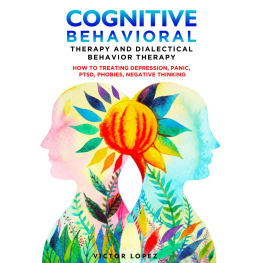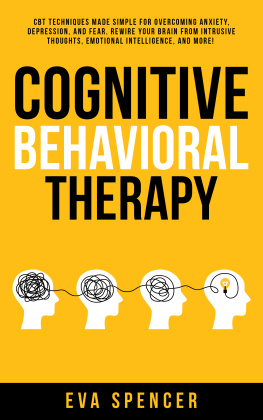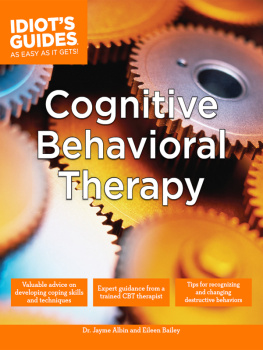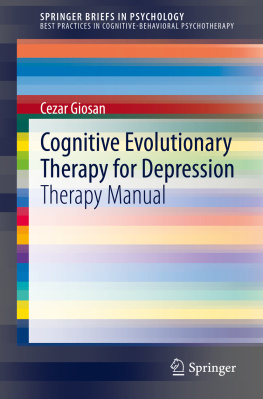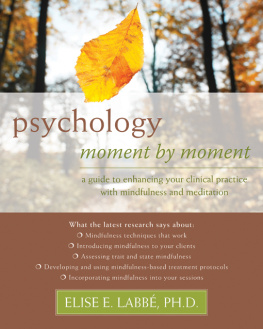
Josefowitz and Myran have written a tremendously useful and practical book for new and seasoned practitioners alike. CBTMadeSimple is accessible, engaging, and provides a wealth of clinical examples, resources, and applications that will be turned to time and time again. The authors experience and wisdom shines through in providing guidance to help the reader apply cognitive behavioral therapy (CBT) not only to their clients, but to learn through applications on themselves. Each chapter follows the structure of a CBT session, and guides the reader through learning in the same way that they will teach their clients. CBT is made simple through this elegantly written book!
Deborah Dobson, PhD, RPsych, adjunct professor in the department of psychology at the University of Calgary, and coauthor of Evidence-Based Practice of Cognitive-Behavioral Therapy; and KeithDobson, PhD, RPsych, professor of clinical psychology at the University of Calgary, and editor of HandbookofCognitive-Behavioral Therapies
This book provides a clear and structured approach to learning and practicing CBT. Nina and David have incorporated active learning strategies, visual and auditory techniques, and lots of opportunities to practice new skills. In addition, a wealth of resources is available online to supplement the text. This book is an invaluable resource for therapists learning CBT for the first time, and for those more experienced who need a refresher in the core principles and practices of CBT.
Enid Grant MSW, RSW, senior director of Childrens Mental Health at Skylark Children, Youth & Families
Josefowitz and Myrans innovative approach to teaching CBT skills engages the reader in a way that I havent seen in previous books on the topic. Each chapter of the book is organized like a CBT sessionsetting an agenda, presenting experiential exercises, and assigning homework. The book describes CBT in a step-by-step, accessible way that is sure to be helpful for both new therapists and seasoned clinicians wanting to brush up on their skills. I highly recommend CBTMadeSimple!
Martin M. Antony, PhD, professor of psychology at Ryerson University, and coauthor of TheShynessandSocialAnxietyWorkbook and TheAnti-Anxiety Workbook
This is a program hidden in a book, which encourages an experiential approach to CBT learning. With the additional web resources (videos, handouts) it will thoroughly engage CBT learners and teachers. A must-have text in the era of expanding CBT practice
SanjayRao, MD, clinical director of the Mood and Anxiety Program at Royal Ottawa Mental Health Centre, associate professor of psychiatry at the University of Ottawa, and executive member of the Canadian Association of Cognitive Behavioural Therapies
Much has been written on CBT. Still there is a needindeed a hungerfor a clear and practical how-to book. This volume fills that need remarkably well. Its pragmatic, skill-based, experiential approach will be extremely helpful especially for clinicians new to CBT for whom it is intended. However, clinicians with all levels of sophistication and experience will find much to deepen their knowledge and practice.
Michael Rosenbluth, MD, FRCPC, chief of the department of psychiatry at Toronto East General Hospital, and associate professor at the University of Toronto
CBTMadeSimple offers an innovative, cutting-edge method of understanding and using CBT using the effective adult learning model. This unique and practical resource will be of great help to clinicians who are new to CBT, as well as those whove been practicing for years. I highly recommend this book!
MatthewMcKay, PhD, psychologist and coauthor of several books, including TheCBTAnxietySolutionWorkbook, ThoughtsandFeelings, and Self-Esteem
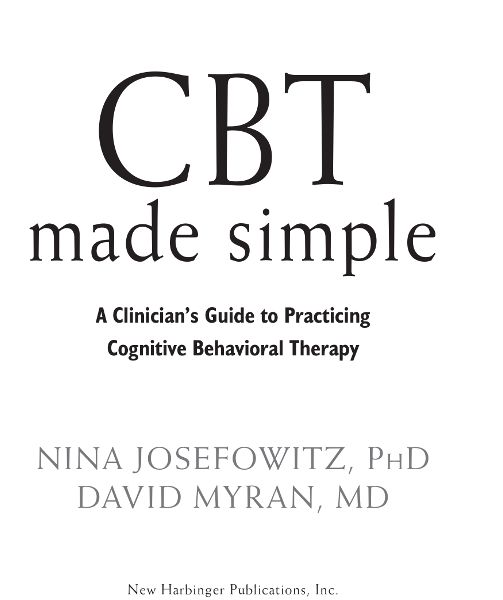
Publishers Note
This publication is designed to provide accurate and authoritative information in regard to the subject matter covered. It is sold with the understanding that the publisher is not engaged in rendering psychological, financial, legal, or other professional services. If expert assistance or counseling is needed, the services of a competent professional should be sought.
Distributed in Canada by Raincoast Books
Copyright 2017 by Nina Josefowitz and David Myran
New Harbinger Publications, Inc.
5674 Shattuck Avenue
Oakland, CA 94609
www.newharbinger.com
Cover design by Amy Shoup
Acquired by Elizabeth Hollis Hansen
Edited by Rona Bernstein
Indexed by James Minkin
All Rights Reserved
Library of Congress Cataloging-in-Publication Data on file
We would like to dedicate this book with love to our children, Laura, Aaron, and Daniel, who have grown into caring, capable, and wonderful adults.
We would also like to dedicate this book to the memory of Paul Josefowitz and his unending curiosity.
Contents
It is fair to say that cognitive behavioral therapy (CBT) has undergone a tremendous evolution over the past twenty-five years. Some of these changes, such as moving from a five-column to a seven-column thought record, have been triggered by internal innovations and have helped extend CBTs relevance to disorders falling outside the orbit of its initial validation for depression and anxiety. Other modifications, such as focusing on strengths and balancing acceptance and change, have come in response to external challenges from other therapy models. With all this movement in the field it can be difficult for therapists to return to the basic elements of this approach in a way that is shorn of trends and niche applications. On this point, in fact, I am frequently approached by trainees who are interested in learning about mindfulness-based cognitive therapy. When I ask them about their CBT background, they say it is minimal and they dont see much need for it. The impression I have is that they are eager to leapfrog past the CBT essentials in order to get to the work they find more interesting. They tend to be surprised at my response, which often runs counter to their wishes and stresses that one cant get very far in learning new CBT variants when the basic model is only weakly understood.
CBT Made Simple does an enviable job in providing just this type of clinically pragmatic and skill-based grounding in CBT theory and interventions. Stemming from Nina Josefowitz and David Myrans two-decade-long careers as cognitive therapists, teachers, supervisors, and academics, this book exemplifies the best qualities of user-friendly, explicit guidance that offers valuable insights into the nuts and bolts of CBT to all levels of learners.
For example, the decision to write this book with a structure that coheres to an actual therapy session is highly innovative. Agendas are set, homework is assigned and reviewed, and learning covers specific skill sets that are relevant to the material being covered. Here we see CBT at its finest. Rather than imparting this information in a purely theoretical manner, CBT Made Simple invites the reader to learn through doing.
Nina and David rightly argue that it is only through the experiential immersion in CBT principles and interventions that the reader will optimize their books value. How much more can be learned from giving yourself a homework assignment and monitoring its performance or even nonperformance? Or scheduling your activities in a typical day and noticing whether life permits them to be achieved in their predetermined order? This approach, to my mind, is what separates
Next page


